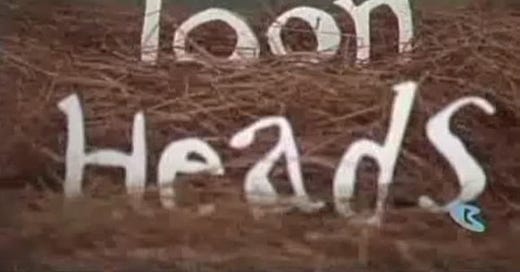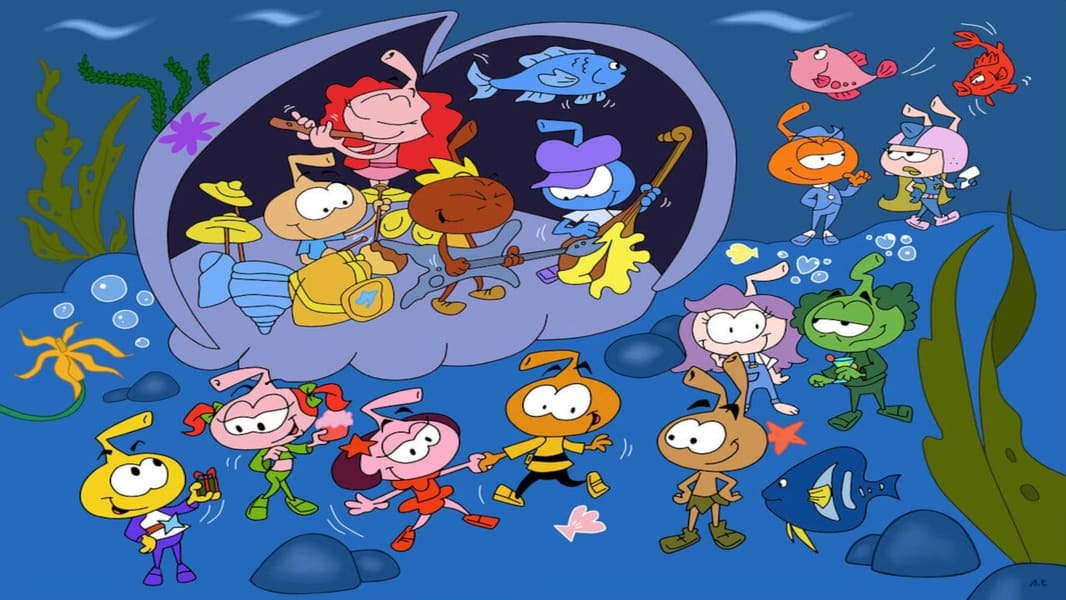Industry News Item
Going back to 2023 for a brief moment - The Streamable has a writeup summarizing Herogo Live TV, the shortest-lived streaming service none of us has heard of. I certainly hadn’t heard of this service before reading this story, but apparently the company promised live TV streams with multiple tiers costing as little as $8.99/month, and offered over 300 channels from Warner Bros Discovery, NBCUniversal, Paramount and Disney. This offering lasted 19 days.
You read that correctly, 19 days. Not weeks, days. The brave souls that tried it out reported missing channels, poor streaming performance, and most damning, apparently no way to cancel. What’s even stranger is that The Streamable reached out to Disney, one of the companies whose channels were being offered, and they had no idea about the offering or even about Herogo itself. Real shady stuff. Eventually the service emailed its customers with a mea culpa and promised refunds.
The subscription VOD service still exists, or at least the website does*; I’m too scared to sign up for an account to see if it actually works, but I recognized ZERO titles on their homepage. Their ‘TV Shows’ section has exactly four titles. Aside from the music documentaries, I could count the number of actors I recognized on one hand (hey there Crystal Bernard from TV’s Wings!). If I were any of the actors who have projects available on this site, it might be worth it to have your agent look into whether these films are actually licensed, because based on their very short foray into linear television, my guess is going to be nope.
An Animated History Lesson
The history of animation of television can fill volumes, and there’s lots of avenues to explore. From the broadcast of animated shorts originally created by the likes of Disney, Warner Bros., and MGM for theatrical distribution, to companies like Hanna-Barbera creating animated series specifically for television, from the Children’s Television Act of 1990 aimed at curbing cartoons that primarily served as advertisements for toys (not that little 80’s babies like me seemed to mind), to the eventual end of the Saturday morning cartoon programming block on broadcast networks in 2014. Today I’m going to talk a bit about the founding of the cable channel Cartoon Network, and specifically about one of its lesser known but fondly remembered programs, ToonHeads (1992-2003).
To talk about the beginning of Cartoon Network, we first have to go back to 1986 and one of the more infamous studio mergers in entertainment history. Media mogul Ted Turner purchased MGM from fellow mogul Kirk Kerkorian for $1.25B (~$3.5B today) in August 1986. However, due to concerns over the overall debt load of Turner’s various ventures he was forced to sell MGM back to Kerkorian only 75 days later. This is probably the record for shortest time between merger and sale of a major studio, at least as far as I can tell. However, ol’ Ted made the shrewd move of holding a lot of MGM’s film and television pre-May 1986 library**, which included such notable animated characters as Droopy and Tom & Jerry. After this “let’s merge/just kidding!” whirlwind, Turner’s animation library a number of Looney Tunes and Merrie Melodies shorts, as well as Popeye. By 1991 Turner won a bidding war for Hanna-Barbera, which swelled the ranks of their animated IP, and put then-VP of the TNT cable network, Betty Cohen, in charge of creating and launching a network utilizing their cartoon stable, so on October 1 1992 Cartoon Network premiered on cable boxes nationwide.
Initially Cartoon Network played cartoons 24 hours a day, scheduling blocks around characters like Bugs Bunny and Daffy Duck, or studios like Fleischer Studios. This was the programming bread and butter during the first era of the network, roughly 1992-94. There would also be newer titles from Hanna-Barbera like SWAT Kats: The Radical Squadron (1993-94) which would also air on sister networks TNT and TBS as well as older Hanna-Barbera series that were previously in syndication - remember the Snorks (1984-89)?
In 1994 the ersatz hybrid live action/animated talk show Space Ghost Coast to Coast (1994-2008) premiered, leading to the creating of the Adult Swim programming block, a brand that exists to this day and has been home to a range of more mature and experimental animated programming. You haven’t lived until you’ve stayed up late and watched Space Ghost, Sealab 2021 and Aqua Teen Hunger Force buzzed and/or high; this was a total college staple for yours truly in the early aughts. Also around the mid-to-late90’s was the beginning of Cartoon Network original programming such as The Powerpuff Girls (1998-2005), Courage the Cowardly Dog (1999-2002) and Johnny Bravo (1997-2004), as well as the Toonami programming block which showcased anime titles like the classic Dragon Ball Z (1989-96) and Robotech (1985). I’d refer to 1994-2001 as the second era of Cartoon Network, as the network exploded in popularity and arguably stole the kids’ programming crown from Nickelodeon during this time.
The reason I have the second era stop at 2001 instead at 2005 with the ending of Powerpuff Girls is due to the conflict between Betty Cohen and Jamie Kellner, who was the head of Turner Broadcasting. The two spared creatively on the direction of Cartoon Network, one of the main topics was over the balance between showcasing classic cartoons versus creating new original titles and characters. As described just above, it wasn’t like Cartoon Network wasn’t creating its fair share of new IP during Cohen’s tenure; in fact I would argue that Cartoon Network had its best original series created under her watch. However Kellner wanted to move even further away from the classic library, leading to Cohen’s departure and the installation of a new head of the network. This change of the guard would coincide (or lead to, depending on your point of view) with the ratings peak for Cartoon Network, and lead to a decline not only in viewership but also cultural impact.
“Hold on a second!”, you may be yelling at me, “What about such impactful cultural hits as Adventure Time and Rick & Morty!? Those are on Cartoon Network.” Yes, yes they are. But when was the last time a Bugs Bunny cartoon or an episode of Scooby-Doo played on the network with any regularity? I’d argue what fueled the growth and success during the first two eras of the network was balancing the old and the new. There was actual programming, in the sense that humans were curating blocks of content around specific characters or themes like anime and anime-inspired content during Toonami and edgy, mature and sometimes experimental content during Adult Swim. It wasn’t just Adult Swim for twelve hours a day, or only retro cartoons 24/7 like on the spinoff network Boomerang. It seems to me that the breadth and depth of programming hit its peak during these initial eras (especially the second era) of the network, and I’ve been around enough network creatives to know which ones have a good feel for what works and which execs make decisions primarily based on economics and playing it safe with numerous spinoffs and copycats.
Cory steps down from his soapbox, takes a drink of water, and changes the subject.
Threading through both eras, usually nestled away in the evenings or late at night, was a series that still featured cartoons but had a more documentarian approach to the material. That series was ToonHeads. Each episode would center around either a theme that connected each of the shorts (eps included “Baseball Cartoons” and “Hollywood Nights”), specific characters such as Elmer Fudd or Daffy Duck that showcased the evolution of the character, creators such as Chuck Jones and Tex Avery, or specific events such as the “The Great Cartoon Controversy”. This episode examines the allegations of plagiarism between MGM's "The Cat Concerto" and Warner Bros. "Rhapsody Rabbit" both shorts about a concert pianist dealing with a mischievous mouse that were both released within months of each other.
I managed to track down the episode via the Interwebs, and the story goes that animation director Friz Freleng was working on “Rhapsody Rabbit”*** and sent off some of the film to be processed by Technicolor. The film lab accidentally sent the processed film to MGM Cartoon Studios, and while MGM eventually returned the film to Warner Brothers, months later “The Cat Concerto” was released by MGM. Freleng was apparently furious and accused MGM of plagiarism. However the animators who directed “Cat Concerto”, William Hanna and Joseph Barbera (yes, the very same), accused Warner Bros. of being aware of their project first as MGM typically had longer development timelines for their animated shorts. To make the similarities even more striking, both Bugs and Tom play the same piece of music, “Hungarian Rhapsody No. 2” by Franz Liszt. Awkwardly, both shorts were screened during the 19th Academy Awards ceremony, and “Cat Concerto” won the Oscar for Best Animated Short, the fourth consecutive win for Hanna and Barbera, a feat no other animation team has done. However the following year Freleng would break their streak, winning the Oscar for “Tweetie Pie” in 1947, which was not only Freleng’s first Academy Award but the first animation Academy Award for Warner Bros. as well.
Both the first two eras of Cartoon Network and shows like ToonHeads celebrated both the past and present of animation, not only entertaining but also educating. Sadly it’s become more difficult to access this era of animation in the streaming world - many (though not all) classic Hanna-Barbera cartoons are available via the streaming service Boomerang, but Warner Bros. Discovery keeps fucking around with their Looney Tunes episodes on Max, Disney+ has some classic shorts available but it is far from exhaustive, and I couldn’t tell you where you could watch Tom & Jerry or Tex Avery shorts. If you’re a fan of the animation from this period of Cartoon Network your best bet is probably to seek out copies on physical media to ensure you’ll have access for years to come.
Go Watch This!
ToonHeads (1992-2003) - A really great series that not only presents curated cartoon selections but also provides history and background to enhance the enjoyment of the works themselves. Unfortunately never released on physical media, you can find selected episodes on YouTube and other corners of the Internet
Jonny Quest (1964-65) - My dad watched this globe-trotting adventure series from Hanna-Barbera when it originally aired, and we would watch it together whenever it aired on Cartoon Network. There’s been a handful of other series based on the property, notably the cyberspace/VR infused The Real Adventures of Jonny Quest (1996-97), but IMO there’s no beating the original. And the soundtrack is straight up FIRE. Available streaming on Tubi and Boomerang, as well to purchase on digital storefronts and on DVD
Thanks for reading!
*I’m purposely not linking to their website because my scammy-senses are tingling. If you are actually interested, your search engine of choice can help you take a look for yourselves
**This is a whole rabbit hole, but if you ever wonder why The Wizard of Oz is owned by Warner Bros. when it clearly was made by MGM, or why MGM as a studio seemed to not be a driving force much after the 1950s, The Hollywood Reporter has a primer on the studio’s history and reasons behind it fading away; long story short, they made a series of bad business decisions that forced the sale of much of their valuable library, props, and studio lot
***This was the first cartoon broadcast on launch day for Cartoon Network





